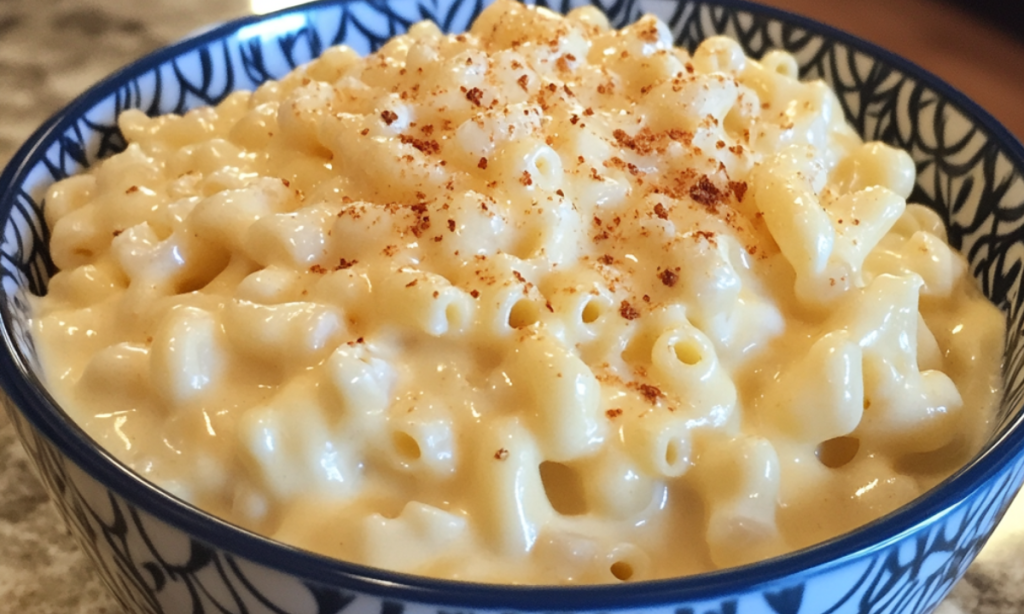Introduction to MSG and Panda Express
MSG, or Monosodium Glutamate, is often a topic of debate in food circles. It’s known for enhancing flavors, especially in Asian cuisine. There’s always been curiosity about its use in restaurants, especially fast-food chains. Panda Express, a big name in Chinese-American fast food, often faces questions about using MSG.
While discussing MSG in fast food chains, it’s also interesting to note how other popular restaurants approach this ingredient. For a comparative perspective, you can read about Chipotle’s stance on MSG usage to understand how different brands address customer health concerns and ingredient transparency.”
Panda Express combines Chinese flavors with an American twist. Nowadays, people care more about what’s in their food. So, the question is, does Panda Express use MSG? This isn’t just about ingredients. It’s about food quality, health, and customer trust.
This article looks into MSG in fast food, its health impact, and Panda Express’s approach. Understanding Panda Express’s MSG use tells us about their menu and shows how fast food is changing.
MSG in Fast Food Industry
The fast food industry, known for its quick service and flavorful dishes, often uses food additives to enhance taste and appeal. Among these additives, MSG (Monosodium Glutamate) stands out, particularly in Chinese cuisine. Its use in various fast food chains, serving Chinese-inspired dishes, has sparked numerous discussions about fast food nutrition and the quality of ingredients used.
In the realm of Chinese cuisine, MSG is a common ingredient, valued for its ability to intensify and enrich flavors. However, its presence in fast food raises concerns among those who prioritize healthy eating. Consumers are becoming increasingly aware of what goes into their food, leading to a demand for greater ingredient transparency from fast food outlets.
As the industry evolves, many fast food establishments are responding to these concerns. They are being more open about their use of food additives like MSG. This shift is not just about meeting consumer demands but also about aligning with the broader trend towards healthier eating habits.
Understanding the use of MSG in the fast food industry, especially in popular cuisines like Chinese, is crucial. It helps us comprehend the balance between taste, nutrition, and consumer expectations. As the industry continues to adapt, the focus on ingredient transparency and healthier options will likely become more pronounced.
Panda Express and MSG
Panda Express, a popular chain in the fast food landscape, has a specific stance on the use of MSG (Monosodium Glutamate) in its dishes. MSG, a flavor enhancer commonly used in Asian cuisines and many processed foods, has been a subject of debate concerning health effects and food quality.
In response to growing health concerns and consumer preferences, Panda Express has taken a clear position regarding MSG in their food. They have publicly stated that they do not add MSG to their dishes. This decision aligns with their goal of offering healthier fast food options and addressing the concerns of their customers.
By avoiding MSG, Panda Express aims to cater to a wider audience, including those who are sensitive to MSG or who prefer to avoid it for health reasons. This decision also reflects a broader commitment to ingredient transparency and quality in their food preparation.
Panda Express’s approach to MSG shows their responsiveness to consumer health concerns and their dedication to maintaining a reputation for quality in the fast food industry. By focusing on fresh and wholesome ingredients, Panda Express sets itself apart as a brand that values both flavor and the well-being of its customers.
Analyzing Panda Express Menu for MSG
When examining the menu of Panda Express for the presence of MSG, it’s important to understand their commitment to not adding this flavor enhancer to their dishes. This approach reflects a growing trend in the fast food industry towards healthier and more transparent food choices.
Panda Express offers a wide range of dishes, from their famous Orange Chicken to various beef, shrimp, and vegetarian options. In analyzing these dishes, the focus is not just on the absence of MSG, but also on the quality and freshness of the ingredients used. Their commitment to not adding MSG is part of a broader strategy to offer healthier options without compromising on taste.
However, it’s worth noting that while Panda Express states they do not add MSG to their meals, some ingredients commonly used in fast food, like soy sauce or certain seasonings, might naturally contain small amounts of MSG. For consumers who are highly sensitive to MSG, it’s always recommended to inquire about specific dishes and their ingredients.
Consumer Opinions on MSG and Panda Express
Consumer opinions on MSG, especially in relation to Panda Express, are varied and reflect a broad spectrum of views and preferences. MSG, or Monosodium Glutamate, has been a contentious topic among consumers due to concerns about its health effects. As a result, Panda Express’s stance on not adding MSG to their dishes has been a significant point of discussion.
Many customers appreciate Panda Express’s commitment to not using added MSG in their food. This decision aligns with the preferences of health-conscious consumers who are wary of food additives. For these customers, the absence of added MSG is a reassuring factor that influences their dining choices, making Panda Express a preferred option.
On the other hand, some consumers are indifferent about the presence of MSG in food, believing that the concerns are overstated or based on outdated information. For this group, the primary factors in choosing a fast food restaurant like Panda Express are taste, convenience, and price, rather than specific ingredients.
There are also customers who are skeptical about claims regarding MSG-free menus, given that certain ingredients naturally contain glutamates. These consumers often call for greater transparency and detailed ingredient information to make informed choices.
Alternatives to MSG in Chinese Cuisine
In Chinese cooking, chefs often replace MSG with natural ingredients. They use tomatoes, mushrooms, and seaweed. These add the umami taste that MSG is known for.
Herbs and spices are also great alternatives. Ginger, garlic, star anise, and Szechuan peppercorns enhance flavors. They add depth without needing MSG.
Fermented sauces like soy and hoisin sauce are useful too. They bring umami to dishes. These should be used in moderation.
Also, cooking techniques matter. Caramelizing onions or slow-cooking meats brings out natural savory flavors.
In short, Chinese cuisine has many ways to flavor food without MSG. These include natural ingredients, spices, fermented sauces, and cooking methods. They keep dishes flavorful and healthy.
Comparing Panda Express with Other Fast Food Chains
When comparing Panda Express to other fast food chains, several factors stand out. Firstly, Panda Express has carved a niche in offering Chinese-American cuisine. This sets it apart from typical burger or pizza chains. It’s not just about different flavors but also about the cooking methods and ingredients used.
Another aspect is the menu variety. Panda Express offers a range of dishes that include vegetarian and lighter options, which is not always the case with other fast food chains. This diversity caters to a broader range of dietary preferences.
In terms of ingredient transparency, Panda Express has been relatively open about their recipes and cooking processes. This approach is becoming increasingly important to consumers who are more health-conscious and interested in the quality of their food.
Finally, considering nutritional content, Panda Express’s menu can be seen as a mix. While they offer some healthier options, like any fast food chain, some of their dishes are high in calories and sodium. This is similar to other fast food chains, where the emphasis is often on taste and convenience over nutritional value.
Overall, Panda Express offers a unique dining experience in the fast food industry, with its focus on Chinese-American cuisine and a range of menu options. However, like its competitors, it faces the challenge of balancing taste, convenience, and nutrition.
Panda Express and Its Food Philosophy
Panda Express has established a distinct food philosophy that sets it apart in the fast food industry. Central to this philosophy is a commitment to providing flavorful Chinese-American cuisine while also being mindful of health and nutrition.
A key aspect of Panda Express’s approach is the fusion of traditional Chinese cooking techniques with American flavors. This blend creates a unique culinary experience that appeals to a wide audience. Their menu is not just about offering fast food; it’s about delivering a taste of Chinese culture with a modern twist.
Another important element in Panda Express’s food philosophy is the emphasis on fresh ingredients. They prioritize the quality of their ingredients, ensuring that dishes are not only tasty but also meet a certain standard of freshness.
Moreover, Panda Express has shown a responsiveness to changing consumer preferences, particularly regarding healthier eating. They have adapted their menu over time, introducing more health-conscious options. This adaptation reflects their commitment to not just serving delicious food but also catering to the well-being of their customers.
In summary, Panda Express’s food philosophy is a blend of cultural culinary traditions, a commitment to quality ingredients, and an adaptation to healthier eating trends. This philosophy underpins their success and distinguishes them in the competitive world of fast food.
FAQs Section
- What is MSG and Why is it Used in Food?
MSG, or Monosodium Glutamate, is a flavor enhancer. It’s used in cooking for its umami taste, which enhances the flavors of a variety of dishes. - Does Panda Express Include MSG in Their Recipes?
Panda Express has stated that they do not add MSG to their menu items. They focus on using fresh and quality ingredients for flavor. - Are There Any Health Concerns Associated with MSG?
MSG has been a topic of debate regarding health. Some people report sensitivities, but numerous studies have found MSG to be generally safe for consumption in moderate amounts. - Can I Eat at Panda Express if I’m Avoiding MSG?
Yes, since Panda Express does not add MSG to their food, it is a suitable option for those looking to avoid this additive. - How Can I Get More Information About Ingredients at Panda Express?
For detailed ingredient information, it’s best to visit the Panda Express website or contact their customer service. They provide information about their menu items and ingredients. - Are There Natural Alternatives to MSG Used in Cooking?
Yes, natural sources of umami like tomatoes, mushrooms, and fermented sauces can be used as alternatives to MSG in cooking. These provide a similar flavor enhancement.
conclusion
In conclusion, exploring the use of MSG, particularly in the context of Panda Express and Chinese cuisine, reveals much about current trends in fast food nutrition and consumer preferences. The move towards healthier eating and ingredient transparency in the fast food industry is evident. Panda Express, in response to these trends, has adapted its menu to align with the growing demand for healthier options and clearer information about food additives.
The shift away from MSG and towards natural flavor enhancers reflects a broader commitment to healthier eating. It highlights the importance of balancing traditional flavors with modern dietary concerns. This evolution in food preparation and presentation in the fast food sector, especially in popular chains like Panda Express, demonstrates an ongoing effort to meet consumer expectations while maintaining the essence of Chinese cuisine.
Overall, the conversation around MSG, its alternatives, and the changing landscape of fast food nutrition underscores the dynamic nature of the food industry. It emphasizes the importance of adapting to consumer needs and the growing emphasis on health and transparency in food choices.














